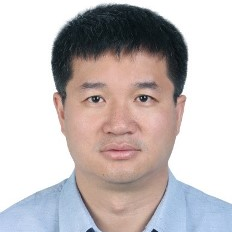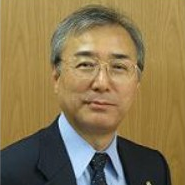Photocatalytic Performance of Semiconducting Materials
A special issue of Crystals (ISSN 2073-4352).
Deadline for manuscript submissions: closed (15 December 2021) | Viewed by 2392
Special Issue Editors
Interests: artificial photosynthesis; heterogeneous photocatalysis; photocatalytic water splitting; organic polymer semiconducting photocatalysts; π-conjugated polymer photocatalysts; g-C3N4 photocatalyst
2. Emeritus Professor, Osaka Prefecture University, Osaka 599-8531, Japan
Interests: photocatalysis; heterogeneous catalysis; photoluminescence spectroscopy; reaction mechanism; clean energy and environment; metal oxide semiconducting materials
Special Issue Information
Dear Colleagues,
The most traditional inorganic semiconducting photocatalysts such as TiO2 and ZnO function only under UV light irradiation, therefore, visible light-responsive inorganic semiconducting photocatalysts such as BiVO4 and Ta3N5 have recently been investigated. On the other hand, organic semiconducting materials such as graphitic carbon nitride (g-C3N4) nanomaterials have also been developed as highly efficient photocatalysts which can operate even under visible light irradiation.
Further research into the development of such inorganic and organic visible light-responsive photocatalytic materials will be vital in establishing artificial photosynthetic systems to efficiently convert solar energy into useful chemical or electrical energy, thus ensuring a stable and cleaner energy source for future generations. We feel it would be beneficial at this time to publish the most recent works in these fields in a special issue with a collection of curated and interesting articles related to the photocatalytic performance of both inorganic and organic semiconducting materials.
We would like to invite you to contribute an article, either an original research article or review, to this Special Issue of Crystals. The deadline for submission is December 15th, 2021. If you should accept our invitation, please refer to the website at the top for more details regarding your submission. We look forward to hearing from you.
Thank you for your kind attention and time.
Prof. Dr. Xinchen Wang
Prof. Dr. Masakazu Anpo
Prof. Dr. Xianzhi Fu
Guest Editors
Manuscript Submission Information
Manuscripts should be submitted online at www.mdpi.com by registering and logging in to this website. Once you are registered, click here to go to the submission form. Manuscripts can be submitted until the deadline. All submissions that pass pre-check are peer-reviewed. Accepted papers will be published continuously in the journal (as soon as accepted) and will be listed together on the special issue website. Research articles, review articles as well as short communications are invited. For planned papers, a title and short abstract (about 100 words) can be sent to the Editorial Office for announcement on this website.
Submitted manuscripts should not have been published previously, nor be under consideration for publication elsewhere (except conference proceedings papers). All manuscripts are thoroughly refereed through a single-blind peer-review process. A guide for authors and other relevant information for submission of manuscripts is available on the Instructions for Authors page. Crystals is an international peer-reviewed open access monthly journal published by MDPI.
Please visit the Instructions for Authors page before submitting a manuscript. The Article Processing Charge (APC) for publication in this open access journal is 2600 CHF (Swiss Francs). Submitted papers should be well formatted and use good English. Authors may use MDPI's English editing service prior to publication or during author revisions.
Keywords
- Photocatalytic performance
- Photocatalysis
- Photocatalytic reaction
- Inorganic materials
- Organic polymer materials
- H2 evolution
- Energy
- Environment
- Degradation
- CO2 reduction
- Photocatalytic organic synthesis
- N2 fixation







